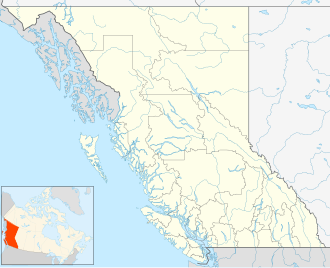This article needs additional citations for verification .(August 2025) |
| Todagin Wildlife Management Area | |
|---|---|
IUCN category IV (habitat/species management area) [1] | |
| Location | Kitimat–Stikine RD, British Columbia |
| Nearest city | Iskut |
| Coordinates | 57°32′00″N129°47′43″W / 57.5332°N 129.7952°W |
| Area | 122,787 ha (474.08 sq mi) |
| Established | 19 March 2001 |
| Governing body | FLNRORD |
| Website | Todagin WMA |
Todagin Wildlife Management Area is a wildlife management area located southeast of Iskut in northwestern British Columbia. It was established by the British Columbia Ministry of Forests, Lands, Natural Resource Operations and Rural Development (FLNRORD) on 19 March 2001 to conserve and manage critical habitat for stone sheep. [2] It is the largest wildlife management area in British Columbia at 122,787 ha (303,410 acres). [3]
